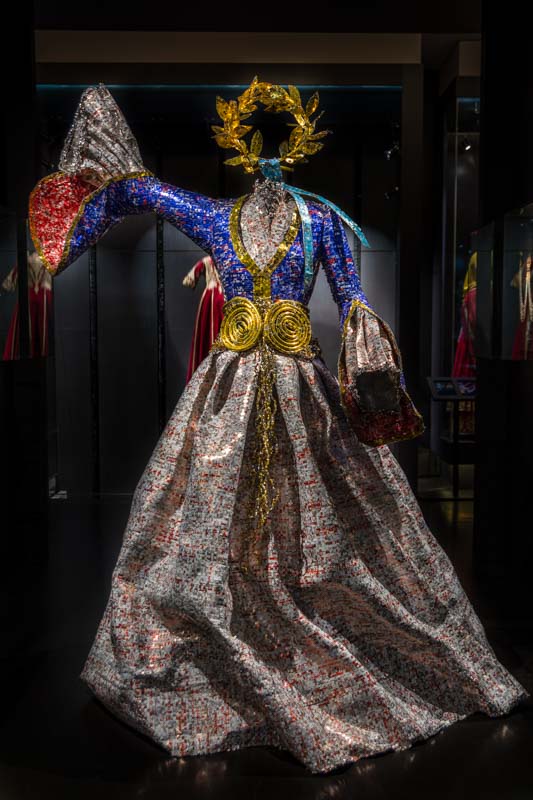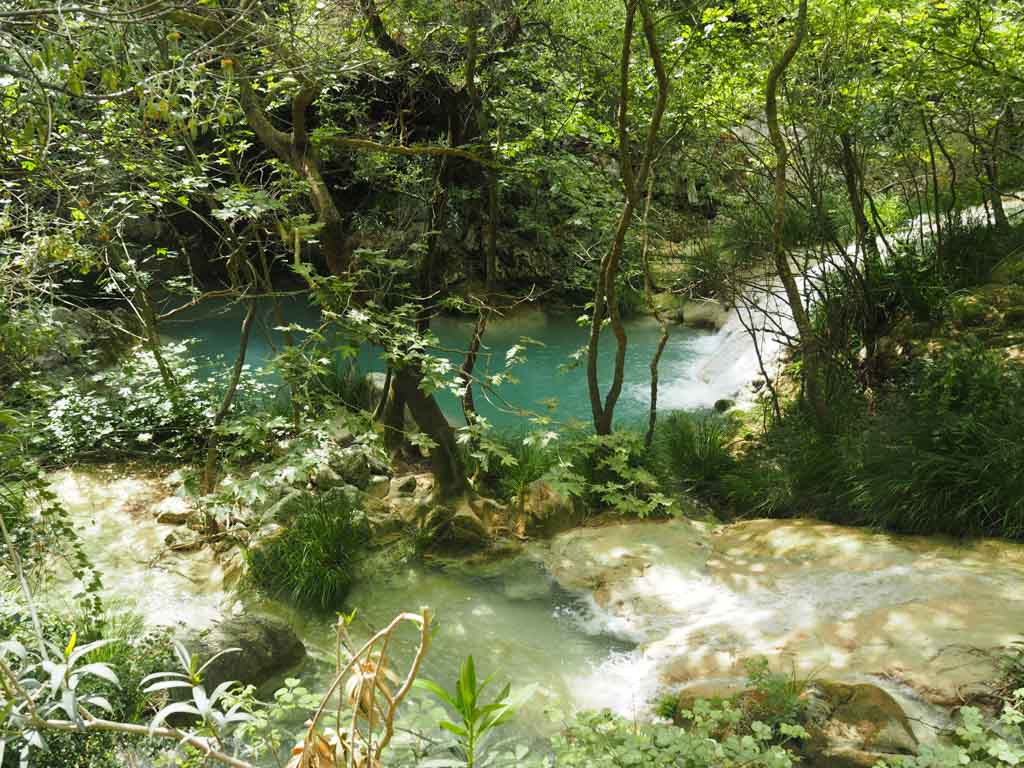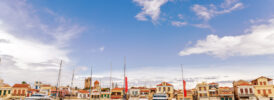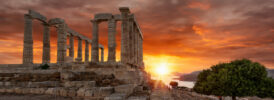The harvest season in Greece is truly a magical time to visit the country. The Mediterranean is slow to grow cold – there are plenty of sunny afternoons for lunching al fresco in short sleeves, and maybe even slipping in a late season swim or two. It’s also an enormously busy and festive season. The agricultural calendar is the cultural calendar in many parts of Greece, and the busy harvest is punctuated with festivals and celebrations – well-earned after the hard work of the harvest season.
The Grape Harvest
This most important of crops – tied so intricately to the life of ancient Greece – shapes the calendar of vintners throughout the nation. It’s a tricky season – one must make haste to pick the grapes at their peak, and hope for dry weather so the perfectly ripe grapes do not have a chance to grow any mold. But all this hard work is joyous too – long days in the beauty of the vineyards under the sunshine.

Flourishing wine regions can be found in many areas of Greece – Macedonia and the Peloponnese among them Crete, the largest island of Greece, has its own very specific viticulture, where indigenous grape varieties are once again being cultivated and celebrated, among them Dafni, Liatiko, Vilana, and Vidiano. These grape varieties thrive in the sometimes rough terrain and rocky soil. To drink these wines is to sip a trace of the ancient past.

The Heraklion region is rich in wine, with many established wineries and some newer vintners creating some wonderful products. The Peza and Archanes regions, less than 20 kilometers south of Heraklion, is rich in vineyards, including Paterinakis, Douloufakis, and Lirarakis. Boutaris – the larger viner from Northern Greece, also has a spectacular wine center. There is also a Peza wine growers cooperative. Dafnes stretches west of Heraklion, in the foothills of Mt. Psiloritis. A PDO of 100% Liatiko grows here. Acharnes and Peza are also PDO regions. Besides enjoying wine tastings in splendid settings, with the vineyards stretching into the distance, this region of Crete is rich in cultural and natural attractions. Heraklion city with its magnificent Venetian fortress, the Morosini Lions Fountain, and the Loggia, is full of charm. One of Greece’s finest archaeological museums is located here, where the rich findings from the excavation of Knossos can be found. And Knossos itself – the Minoan Palace so vividly excavated and partially restored by Sir Arthur Evans, is an absolute must. For excursions in nature, the Dikteon Andron Cave – the mythological hiding place of the infant Zeus – is a speleological delight.
Tsipouro Making
This spirit distilled from grape pomace – ‘marc’ – is extremely popular in northern Greece, where its bold flavor accompanies zesty meze, and of course delightful conversation. It can be made plain – with no flavor save the essence of the grape. Or with botanicals, prominent among them anise, which makes it like a slightly bolder ouzo.

The process of tsipouro making involves letting the skins, pulp, and seeds of the grapes that have been pressed for wine to ferment. The resulting fermented mash is then distilled in a copper still. There are both large scale and small scale productions throughout many regions of Greece, most notably though are the areas around Mt. Olympus, and the Zagori region.

Fortunately, both of these areas are fantastic destinations for a variety of reasons. Zagori, and the famous “Zagorohoria” (“Villages of Zagori”) is famous for autumn foliage, elegant rustic cuisine, and the famous villages themselves – wonderful examples of vernacular stone architecture. This is a paradise for hikers, with trails of every level of challenge. The scenery is splendid. Equestrians, too, will enjoy trail rides through the changing leaves and beside rushing streams. The more adventurous traveler can also enjoy white water rafting here. In recent years, many young people have been returning to the region, opening superb boutique accommodations and good restaurants that celebrate the true character of Zagori.

The Olympus region of course is full of legend and charm. The mountain itself can be experienced by even amateur climbers, to a point – perhaps up to one of the first mountain shelters and back, to return, with an excellent appetite, to Litochoro, a splendid village at the foot of majestic Olympus. While here, the nautical museum makes a wonderful outing – many shipbuilders and captains are from this village (the sea is not far). Another magical setting is the spring at Prionia, where pure mountain waters cascade down the mountain dramatic falls and blue pools.

Some villages of historic charm dot the region. Rapsani is one of them, and the mountainside village of Agios Panteleimonas is a protected landmark, with every historic detail lovingly preserved and restored. Naturally, a highlight of the Olympus region is a visit to Dion, a sacred site of Ancient Greece, where one finds magnificent excavations on the banks of a stream – a magical location – as well as a splendid museum.
The Olive Harvest
Throughout much of Greece and the Islands, fall is dominated by the olive harvest and subsequent olive pressing. The rich and grassy fragrance of freshly-pressed olive oil is marvelous. Of course, throughout Greece and indeed the world the region of Kalamata is much associated with the olive – this slender black olive is among the best known table olives anywhere.

Some agrotourism initiatives make it possible to enjoy the life of a farmer – or at least a small taste of it – by participating in the harvest. Delightful accommodations can be arranged for this unique experience to connect with the land, and of course the cuisine is excellent. While in the Kalamata region, one can enjoy this charming coastal city, which has a very special museum. While one will find traditional folk costumes in every region of Greece at local ethnographic museums, in Kalamata one finds something else altogether. The Victoria Karelias Collection of Traditional Greek Costumes is superb. Here under one roof, a carefully curated collection of traditional costumes of all regions attest to a glorious and diverse tradition, and tremendous skill in textiles of all kinds.

Those wishing an outing in nature can do no better than a hike to the Polylimnio waterfalls. There is a gorge of the same name about 30 kilometers outside of Kalamata, and through the hike of approximately 3 kilometers one finds a series of lakes – 15 of them. In fact the name Polylimnio means “many lakes.” Waterfalls connect them, those at Kadi lake being the highest, at some 25 meters. Fall is an excellent season for the excursion.

And of course a visit to the Kalamata region is not complete without a visit to Ancient Messene. A site from the Bronze Age, it was revived in the 4th century BC, when General Epaminondas led the helots of Messenia in a successful revolt against their Spartan oppressors. Magnificent ruins survive including the ancient Odeon and the ancient Stadium, a Bouleuterion, a temple to Asclepius and Hygeia, and a sanctuary to Zeus. There is a great deal to see, and the site is somewhat under the radar compared to other Peloponnesian sites such as Epidaurus and Ancient Olympia.

The harvests of Autumn are a wonderful tie to a Greek escape – the summer heat has ebbed, and the crisp days of fall are perfect for hiking. Moreover, in tying one’s visit to the harvest, one experiences a greater connection to Greece. Have you ever visited Greece in the autumn?





